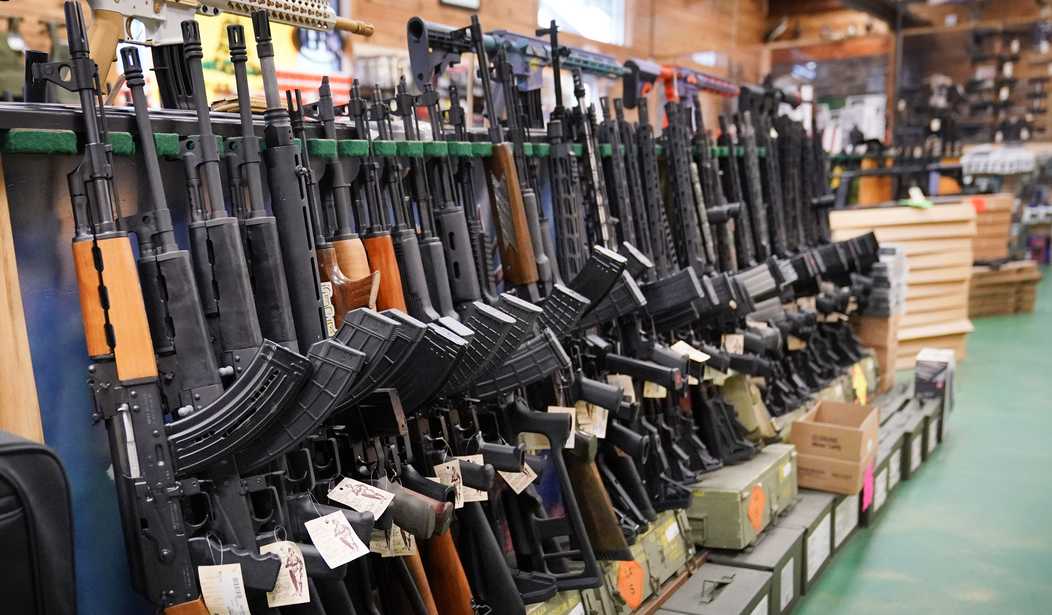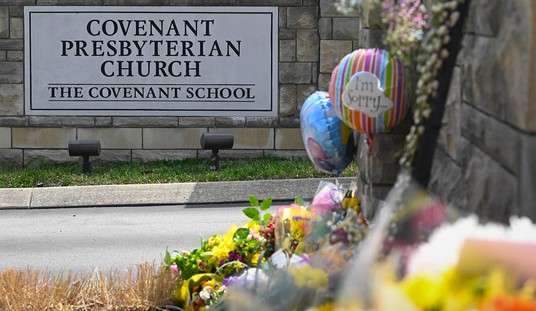When a mass shooting happens, we all start looking for answers. This is only right, after all. We shouldn’t just pretend this is a natural part of life. We need to understand what happened and what, if anything, could be done to prevent it.
That’s why many people back red flag laws.
They look back and they see tons of warning signs. It’s why an editorial at Bloomberg is pushing them, too.
Monday’s mass shooting at the Old National Bank in downtown Louisville is the latest reminder of America’s worsening epidemic of gun violence. It should be more than enough to spur elected officials to pass common-sense measures to keep guns away from unstable individuals.
The Louisville shooting left five people dead and at least eight wounded, including two police officers. Despite his mental-health issues, the shooter was able to legally purchase an AR-15-style rifle the week before. The massacre came just two weeks after three nine-year-old students and three staffers at a school in Nashville were killed by a disturbed individual who had managed to stockpile seven guns despite having been diagnosed with an emotional disorder.
Kentucky Governor Andy Beshear, who lost a close friend in the Louisville shooting, gave an emotional speech this week on the need to prevent future tragedies. As a Democrat who supports tougher gun laws, but faces a veto-proof Republican legislature, his frustration is understandable. Other officials have less excuse for inaction.
The fact is, research shows that a majority of mass shooters exhibit warning signs before committing murder. Laws that aim to prevent these people from accessing firearms are a critical tool in reducing the likelihood of mass shootings. Known as red-flag laws, such measures allow police or family members to ask a court to temporarily confiscate weapons belonging to unstable individuals. They’re one of the few gun-safety policies that command a degree of bipartisan support — and they seem likely to work: A study of Connecticut’s red-flag policy credited the law preventing at least one death for every 10 to 20 times it was used. A California study of 21 cases found that after guns were taken from individuals who’d made explicit shooting threats, no further violence occurred.
Except those studies are extrapolations based on stuff that didn’t happen. That alone raises questions about those studies all on their own. Plus, as a Bloomberg columnist pointed out not all that long ago, most of these studies are absolute garbage anyway.
See, part of the problem with advocating for red flag laws is that it’s easy to see all the warning signs after a shooting has occurred. We see it and we look back and think, “Well, yeah, it’s obvious.”
At the time, though, it’s not necessarily any such thing.
For example, the killer in Nashville supposed should have been caught because she had an emotional disorder. However, two of the most common mental illnesses–depression and anxiety–are termed as emotional disorders too.
We can look back at Nashville and think, “Well, yeah, she was sick.”
At the time, many people–other than the killer’s anti-gun mother, at least–wouldn’t necessarily have thought any such thing.
Red flag laws look great in hindsight, but in reality, they require everyone to put the pieces together just right.
However, we also know that red flag laws aren’t needed to stop mass shooters. We’ve seen numerous cases where someone saw something, notified the police and a killing was stopped.
None of that gets into the other problems with red flag laws, such as the complete lack of due process for the accused–they’re treated as guilty until proven innocent–and the fact that such laws still leave supposedly dangerous people walking around, free to hurt people in any other way they can imagine.
Considering the two worst cases of mass murder in American history didn’t involve guns but instead one used airplanes and the other a rental truck loaded with fuel and fertilizer, leaving such people untreated and walking around should be downright terrifying.
So no, a red flag law isn’t a simple slam dunk, though I know the folks at Bloomberg likely think so. I’m sure the fact that their publication was founded by and shares a name with a notorious anti-gunner has nothing to do with that, either, but instead reflects the ivory-tower vision that most journalists seem to have when it comes to guns. They’re long on ideas and can tell you all about why they’ll work, but have no practical understanding of what they’re actually calling for.








